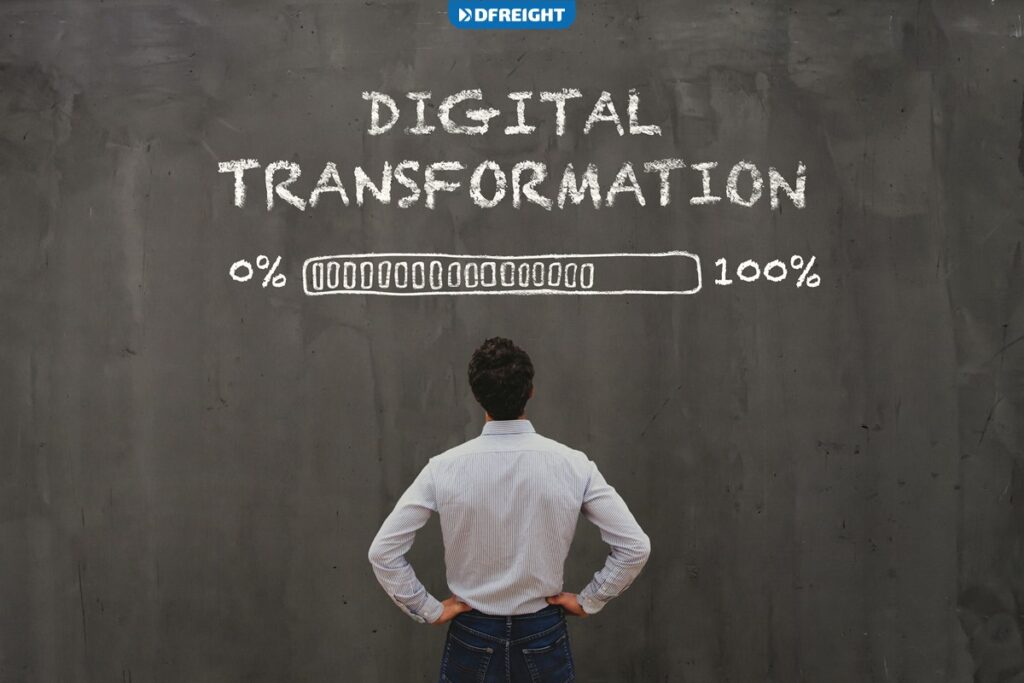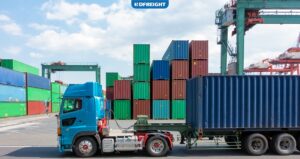The supply chain sector is one of the most rapidly evolving industries. Every year, new technologies and trends emerge that have the potential to revolutionize the way businesses operate. The latest supply chain trends are always worth keeping an eye on, especially if you’re in the business of moving and storing goods. By understanding the latest trends, you can stay ahead of the competition and ensure your operation is as efficient as possible. Here are some of the latest trends to look for:
Table of Contents
Supply Chain Digitalization
The globalization of business has led to the rise of the digital shipping and supply chain. This new way of managing the supply chain uses digital technologies to connect suppliers, manufacturers, retailers, and customers in real-time. The digital supply chain can be used to manage the entire lifecycle of a product, from the raw materials to the finished product.
The digital supply chain is a more efficient and effective logistics management. It allows for better communication and collaboration between all parties involved in the supply chain. It also provides visibility into the entire supply chain, identifying and resolving problems quickly. The digital supply chain is changing the way businesses operate. Businesses need to understand digitalization and how it can be used to improve their operations.
Cloud-Based Solutions
The advent of cloud computing solutions has transformed how businesses operate, and the supply chain is no exception. Cloud-based solutions provide several advantages over traditional on-premise solutions, including increased flexibility, scalability, and cost-effectiveness.
One of the most significant advantages of cloud-based solutions is their increased flexibility. Businesses are often locked into a specific vendor or platform with on-premise solutions. This can make it difficult to scale up or down as needed or switch to a different solution if the original one is no longer meeting their needs. Cloud-based solutions, on the other hand, can be quickly and easily implemented, and businesses can switch between different solutions with little effort.
Another advantage of cloud-based solutions is their scalability. On-premise solutions can be difficult to scale as businesses grow since they often require additional hardware and software to be installed. Cloud-based solutions, on the other hand, can be easily scaled up or down to meet the changing needs of businesses. This scalability is one of the reasons why many businesses are moving to the cloud.
Finally, cloud-based solutions are typically more cost-effective than on-premise solutions. On-premise solutions often require a significant upfront investment in hardware and software and ongoing maintenance and support costs. Cloud-based solutions, on the other hand, are typically subscription-based, which means that businesses only pay for what they use. This can be a significant cost saving for businesses, especially small businesses.
The advantages of cloud-based solutions make them an attractive option for businesses of all sizes. Whether you’re looking for increased flexibility, scalability, or cost savings, cloud-based solutions can provide it.
Supply Chain Sustainability
In recent years, sustainability has become an increasingly important topic within the business world. As organizations become more aware of their operations’ environmental and social impact, they are looking for ways to reduce their footprint. One area that is often targeted for improvement is the supply chain.
There are several ways in which sustainability can impact the supply chain. For example, companies may choose to source materials from suppliers who strongly commit to sustainability. They may also implement sustainable practices within their operations, such as reducing energy consumption or waste.
Sustainability can also have an impact on the financial bottom line. Companies can save money on operating costs by reducing waste and improving efficiency. In addition, sustainability can help to build brand equity and customer loyalty.
Ultimately, sustainability is about making long-term improvements to the way we do business. By incorporating sustainability into their logistics processes, companies can positively impact the environment and their bottom line.
Agile Supply Chains
An agile supply chain can respond quickly and efficiently to changes in demand. This type of supply chain is highly adaptable and can quickly change how it operates to enhance customer service and boost customer loyalty. An agile supply chain is characterized by short lead times, high levels of flexibility, and quick response times. This type of supply chain is often used by businesses that operate in fast-paced industries or that have a large number of SKUs.
An agile supply chain is built on Lean and Agile manufacturing principles. Lean manufacturing is a method of production that focuses on reducing waste and maximizing efficiency. Agile manufacturing is a method of production characterized by flexibility and the ability to adapt quickly to changes. Combining these two methods results in a supply chain that can respond quickly to changes in demand while maintaining high-efficiency levels.
IoT-Based Supply Chains
The Internet of Things, or IoT, is a system of interconnected devices and sensors that collect and share data about themselves and their surroundings. IoT has the potential to revolutionize the world of logistics by providing real-time visibility into the location and condition of inventory, equipment, and people. This information can be used to optimize routes, schedule maintenance, and predict demand. IoT can also help companies track and respond to customer behavior, preferences, and needs.
IoT-enabled devices and sensors are becoming increasingly commonplace in the supply chain. For example, RFID tags can be used to track the location of inventory as it moves through the supply chain. Temperature and humidity sensors can be used to monitor the condition of perishable goods. GPS devices can be used to track the location of vehicles and personnel.
The data collected by IoT devices can be transmitted to a central system for analysis. This data can then be used to improve the efficiency of supply chain operations. For example, if inventory is regularly running low, the data can be used to adjust production levels or re-route shipments. If sensors indicate that a particular piece of equipment is malfunctioning, it can be repaired or replaced before it breaks down.
IoT is already having a major impact on supply chain management, and this impact is only expected to grow in the future.
AI-Based Supply Chains
In recent years, the field of artificial intelligence (AI) has profoundly impacted almost every aspect of our lives—including how we manage supply chains. By automating repetitive and low-level tasks, AI can help supply chain managers free up their time to focus on more strategic tasks. Additionally, AI can help optimize supply chains by providing real-time data analytics to help managers make more informed decisions.
For example, consider the way that AI can be used to track and predict demand. By analyzing historical data, AI can identify patterns in customer behavior and make predictions about future demand. This information can be used to adjust production schedules and inventory levels so that companies can avoid stockouts and excess inventory. Additionally, AI can be used to monitor the supply side of the equation, tracking the movement of goods through the supply chain and identifying bottlenecks and other issues.
The potential applications of AI in logistics are virtually limitless. As the technology continues to evolve, we expect to see even more AI-powered innovations to help streamline and optimize supply chains.
Robotics in Logistics
In the last few years, the use of robotics in logistics and supply chain management has increased significantly. This is due to the many advantages that robots offer over traditional methods of handling and transporting goods. For example, robots can work around the clock without breaks, increasing productivity and efficiency. In addition, robots can be easily programmed to handle different types of products, which reduces the need for manual labor.
The use of robotics can also help to improve the accuracy of orders and inventory planning. This is because robots can be equipped with sensors that can track the movement of goods and identify when an item is out of stock. This information can then be used to reorder goods from suppliers automatically.
Another benefit of using robotics in logistics is that it can help to reduce the risk of accidents. This is because robots can be designed to follow safety protocols and can be equipped with sensors that help to avoid collisions.
Using robotics in logistics can offer many benefits over traditional methods. This is why many companies are now investing in robots to help improve their operations.
Blockchain in Logistics
The use of blockchain in logistics is a relatively new concept that is beginning to gain traction in the industry. Blockchain is a distributed database that allows for secure, transparent, and tamper-proof recordkeeping.
There are several potential benefits of using blockchain in logistics. Perhaps the most significant is real-time tracking. This would allow for greater transparency and visibility into the supply chain, which would help to identify bottlenecks and inefficiencies. Additionally, blockchain could help to improve security and reduce the risk of fraud, scams, and theft.
While the use of blockchain in logistics is still in its early stages, it has the potential to revolutionize the industry. As technology develops and becomes more widely adopted, we will likely see even more benefits emerge.

Wrap Up
As we move on, it’s important to keep an eye on the latest supply chain trends so that your business can be prepared for whatever comes next. Here are the latest supply chain trends to look for:
1. Increasing Focus on Sustainability
With the growing awareness of the importance of sustainability, more and more businesses are looking for ways to reduce their environmental impact and move toward green logistics. This means that sustainable practices, like using recycled materials and renewable energy, will become more common in the supply chain.
2. Greater Use of Technology
Technology is becoming increasingly important in logistics. From RFID tags to track inventory to blockchain to manage contracts, businesses are using technology to streamline their operations and improve efficiency.
3. More Customization and Personalization
As consumers become more and more demanding, businesses will need to be able to customize and personalize their products and services. This trend is already starting to emerge in the form of made-to-order products and personalized marketing messages.
4. Increased Focus on Security
With the rise of cybercrime, businesses are increasingly focused on security. This means we’ll see more businesses investing in security measures like data encryption and two-factor authentication.
5. Greater Transparency
Consumers demand more transparency from businesses, which is starting to show up in logistics. Businesses are beginning to share more information about their sourcing and manufacturing processes and their environmental and social impact.
By keeping an eye on these trends, your business can be prepared for the changes that are coming in the new future.
FAQs
What are some of the latest supply chain trends to look for in 2023?
Some of the latest supply chain trends to look for in 2023 include the continued rise of e-commerce, the increasing importance of data analytics tools, and the need for greater supply chain visibility.
How can companies keep up with the latest trends?
Companies can keep up with the latest trends by investing in technology, collaborating with partners, and collecting and analyzing data.
What are some ways to improve supply chain efficiency?
Ways to improve supply chain efficiency include streamlining operations, automating processes, and using data and analytics to make informed decisions.
What are some common supply chain issues that can impact businesses?
Common supply chain issues impacting businesses include disruptions, delays, and errors.
How can businesses overcome supply chain challenges?
Businesses can overcome supply chain challenges by being prepared, having contingency plans, and using technology to improve visibility and communication.














